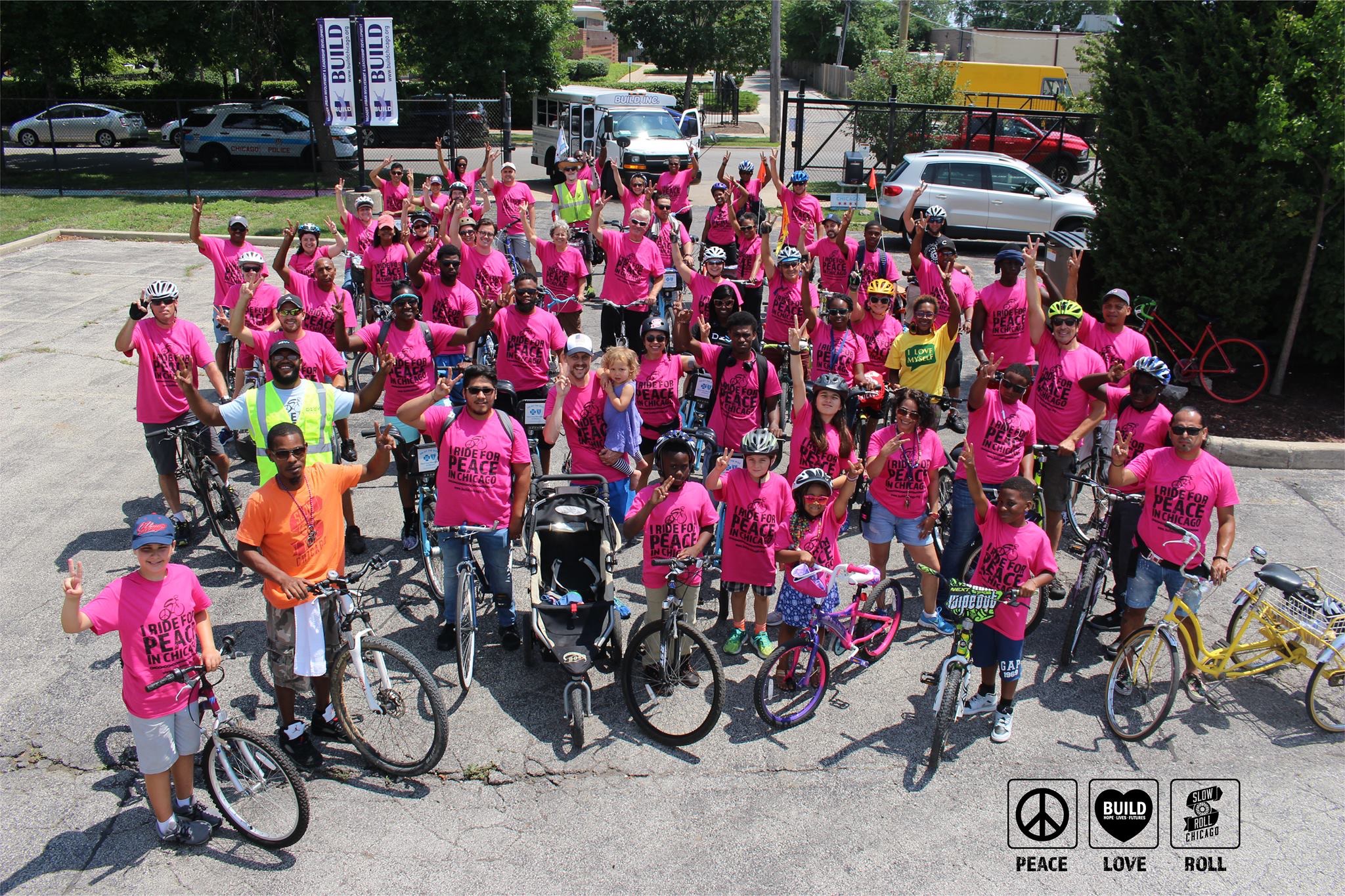Last week’s Chicago Reader transportation column looked at Slow Roll Chicago’s push for more ownership of the Vision Zero program by Black and Brown communities. This included concerns that the format of the planned Vision Zero Summit would have discouraged participation by residents of the current Vision Zero focus communities of North Lawndale, Garfield Park, and Austin, which led the Active Transportation Alliance to postpone the event.
In the wake of this small victory, Slow Roll Chicago cofounder Oboi Reed recently led an online discussion on several social media platforms, with participation from Vision Zero advocates and mobility justice activists from around the country. During the talk Reed argued that the national Vision Zero movement must focus on structural racism as a root cause of higher traffic violence rates in African-American and Latino communities across the country.
Reed also asserted that city officials and transportation advocates need to work harder to facilitate meaningful community engagement with the people who will be most heavily affected by crash prevention initiatives. He added that groups like Active Trans need to do more to confront unintentional bias within their organizations that can lead to problems like the flawed summit rollout.
In addition, Reed argued that, due to the Chicago Police Department’s well-documented problems with civil rights violations by officers working in communities of color, increased enforcement should be taken off the table as a Vision Zero strategy in our city’s Black and Brown neighborhoods.
You can watch Reed’s entire presentation in the following video. I also encourage you to check out a detailed post on Vision Zero equity issues which he wrote last month with input from with Rutgers University researcher Charles T. Brown and Go Bronzeville leader Ronnie Matthew Harris. For your convenience, below are a few more salient points Reed made during the online discussion, which I wasn’t able to include in the Reader piece due to word-count limitations.
Reed asserted that the basic problem with U.S. Vision Zero Programs is that departments of transportation aren’t reaching out to everyday residents of the most heavily impacted communities from the start of the planning process, but only after their plans are released.
Then they go, “Hey we’ve got something that we’re rolling out, it’s going to beautiful, it’s going to save Black and Brown babies from being killed.” For the average person, that’s a lofty goal. We’re going to slow down traffic so that I don’t have to worry about my parents or my children being hit by a car? Wonderful. But they come to us with the plan already in place. Our concern is that we want to be at the table when the plan is being discussed.
As part of his discussion of why he doesn’t support increased policing in Chicago’s communities of color as part of Vision Zero, Reed said research exists that shows that enforcement is the least effective component of crash prevention programs. (He has since put in a request to the National Association of City Traffic Officials for data to back up this assertion.)
Instead, Reed argued that engineering, in the form of street designs that protect vulnerable road users and force people to drive slower, has been shown to be the most successful Vision Zero component. Education – teaching and inspiring people, especially motorists, to travel more safely – is the next most effective approach.
“So enforcement is the least effective, and it’s potentially deadly for community of color,” Reed said. “We don’t want Vision Zero to further contribute to the criminalization of our neighborhoods." He acknowledged that red light and speed cameras can help eliminate racial bias from traffic enforcement. But he added that that the cams shouldn’t be concentrated communities of color, which have been disproportionately impacted by car-centric urban planning, and the penalties should not be regressive.
“We’ve got ten years [until Chicago’s 2026 Vision Zero deadline] to fix this problem,” Reed said. “Invest the resources to design streets that are safer and I’m confident that through engineering and education we’ll get to zero deaths within ten years.”
During the Q & A session, on participant asked “What about pushback from aldermen against engineering low-speed traffic?” Reed responded:
Vision Zero advocates, mainstream transportation advocacy organizations, and us as Black and Brown people who want our neighborhoods to be safer, who want our neighborhoods to be more walkable and bikeable, we need to do a better job of communicating the benefits of more livable neighborhoods. I don’t blame Black and Brown people for wanting to get in and out of their neighborhoods quickly. I don’t blame them for mostly focusing on reducing [gun] violence. These are the priorities, and they should be.
But what we’re saying is that we need to have a comprehensive approach to reducing violence and healthcare disparities. We need a comprehensive approach to creating jobs. And cycling has a role to play in all three.






